Nondestructive Measurement of Emissivity of Damaged Parts of Coatings
Abstract
:1. Introduction
2. Materials and Methods
2.1. Emissivity Measurement Method Based on the Infrared Thermal Imager
2.2. Experimental Device and Test Pieces
2.3. An Experiment of Measuring Emissivity by Infrared Thermal Imager
3. Result and Discussion
3.1. Processing of Emissivity Results
3.1.1. Damaged Emissivity Results Processing
3.1.2. Bulge Emissivity Results Processing of Damaged Sites
3.2. Verification of Emissivity Measurement Results
4. Conclusions
- For shedding damage, when the damage diameter is greater than 2 mm, the emittance is mainly affected by the base metal, and the emittance value of smooth metal material is low, so the emittance value at this time is lower than that of infrared low emissivity coating. However, when the damage diameter is less than 2 mm, the emissivity increases. This is because the cavity is formed and the energy emitted is reflected several times and then absorbed by the infrared thermal imager. As a result, the calculated reflectivity becomes smaller, leading to higher emissivity.
- Due to the exposure of the dark adhesive layer in the middle of wear damage, the low-emissivity coating is damaged and the surface is no longer smooth. Therefore, the emissivity of the wear part is higher than that of the coating, resulting in an increase in the emissivity. The impact of wear damage on the overall emissivity energy should be measured quantitatively according to the wear area in time, to evaluate whether the emission rate after wear meets the requirements.
- The emissivity of the Bulge damage site was generally higher than that of the control area and showed a gradually increasing trend with the increase of temperature, but the emissivity increased to a small extent, which was basically the same as the effect of debonding damage.
- According to the results of this experiment, the feasibility and accuracy of the emissivity measurement method of infrared low emissivity coating defects based on a thermal imager are verified. The infrared stealth performance of the parts coated with infrared low emissivity coating can be quickly and measured on a large scale, which provides a method for comparing and measuring the stealth performance of local coating defects of equipment under certain conditions.
- Based on the analysis of the above experimental results, it is possible to implement non-destructive testing of the damaged parts of the coating emissivity. The future research direction is how to detect the emissivity of the curved surface to adapt to the surface of objects with different shapes.
Author Contributions
Funding
Institutional Review Board Statement
Informed Consent Statement
Data Availability Statement
Conflicts of Interest
References
- Liu, B.; Li, H.Y. Influence of surface emissivity of materials and its measurement technology progress. Ind. Metrol. 2018, 28, 90–94. [Google Scholar]
- Dai, J.M.; Song, Y.; Wang, Z.W. Spectral emissivity measurement technology. Infrared Laser Eng. 2009, 38, 710–715. [Google Scholar]
- Michael, V.; Klaus, P.M. Infrared Thermal Imaging; Verlag GmbH & Co. KGaA; Wiley: Weinheim, Germany, 2010; pp. 127–145. [Google Scholar]
- Monchau, J.-P.; Marchetti, M.; Ibos, L.; Dumoulin, J. Emissivity measurements of building and civil engineering materials: A new device for measuring emissivity. Int. J. Thermophys. 2014, 35, 1817–1831. [Google Scholar] [CrossRef]
- Li, X.M.; Li, W.J.; Gu, Z.H. Research on method of measurement of emissivity of material. J. Metrol. 2014, 35, 10–12. [Google Scholar]
- Tang, L.; Liu, L.; Su, J.H. Spatial resolution degradation modeling and simulation of thermal imaging system. Foreign Electron. Meas. Technol. 2014, 33, 21–27. [Google Scholar]
- Hou, C.G.; Zhang, G.M.; Zhao, M.T. Accurate measurement of object emissivity using infrared imaging technique. J. Infrared Millim. Waves 1997, 16, 193–198. [Google Scholar]
- Standard Test Methods for Measuring and Compensating for Emissivity Using Infrared Imaging Radiometers: ASTME1933-99AE; ASTM International: West Conshohocken, PA, USA, 2005.
- Yang, L.; Kou, W.; Liu, H.K. Surface emissivity measurement and error analysis using infrared thermography. Laser Infrared 2002, 32, 43–45. [Google Scholar]
- Huang, L.X.; Shen, X.H.; Song, J.T. Measure target wideband emissivity with thermal imager. Laser Infrared 2009, 39, 159–161. [Google Scholar]
- Xu, J.; Chen, Y.S.; Zhen, H.Y. Fabric IR emissivity as measured by IR thermal-imaging technology. Text. J. 2009, 30, 42–44. [Google Scholar]
- Bai, J.C.; Yu, Q.B.; Hu, X.Z. Surface emissivity measurement method based on infrared thermal imager. J. Northeast. Univ. 2013, 34, 1747–1750. [Google Scholar]
- Liu, H.; Ai, Q.; Xia, X.L. Measurement of infrared emissivity of surfaces with non-uniform millimeter-scale roughness. J. Eng. Thermophys. 2013, 34, 317–319. [Google Scholar]
- Li, Y.Y.; Qu, H.M.; Liu, W.J. Field target emissivity measurement based on the environmental radiation. Laser Infrared 2013, 43, 272–275. [Google Scholar]
- Liu, L.W.; Yang, M.M.; Fan, H.J. Method for surface emissivity measurement. Laser Infrared 2014, 44, 152–157. [Google Scholar]
- Li, Y.F.; Zhang, Z.J.; Zhao, C.Y. The infrared thermal imager is used to measure the normal emissivity of the object surface. Chin. J. Sens. Actuators 2017, 30, 1348–1351. [Google Scholar]
- Li, W.J.; Xu, Y.D.; Zheng, Y.J. Matching method of infrared thermal imager and surface thermocouple measurement emissivity. China Meas. Test. 2017, 43, 12–15. [Google Scholar]
- Alexa, P.; Solař, J.; Čmiel, F.; Valíček, P.; Kadulová, M. Infrared thermographic measurement of the surface temperature and emissivity of glossy materials. J. Build. Phys. 2018, 41, 533–546. [Google Scholar] [CrossRef]
- Barreira, E.; Almeida, R.M.S.F.; Simões, M.L. Emissivity of building materials for infrared measurements. Sensors 2021, 21, 1961. [Google Scholar] [CrossRef] [PubMed]
- Li, Y.F.; Zhang, Z.J.; Zhao, C.Y. Surface band normal emissivity measurement using infrared thermal imager. Chin. J. Sens. Actuators 2017, 30, 1348–1351. [Google Scholar]
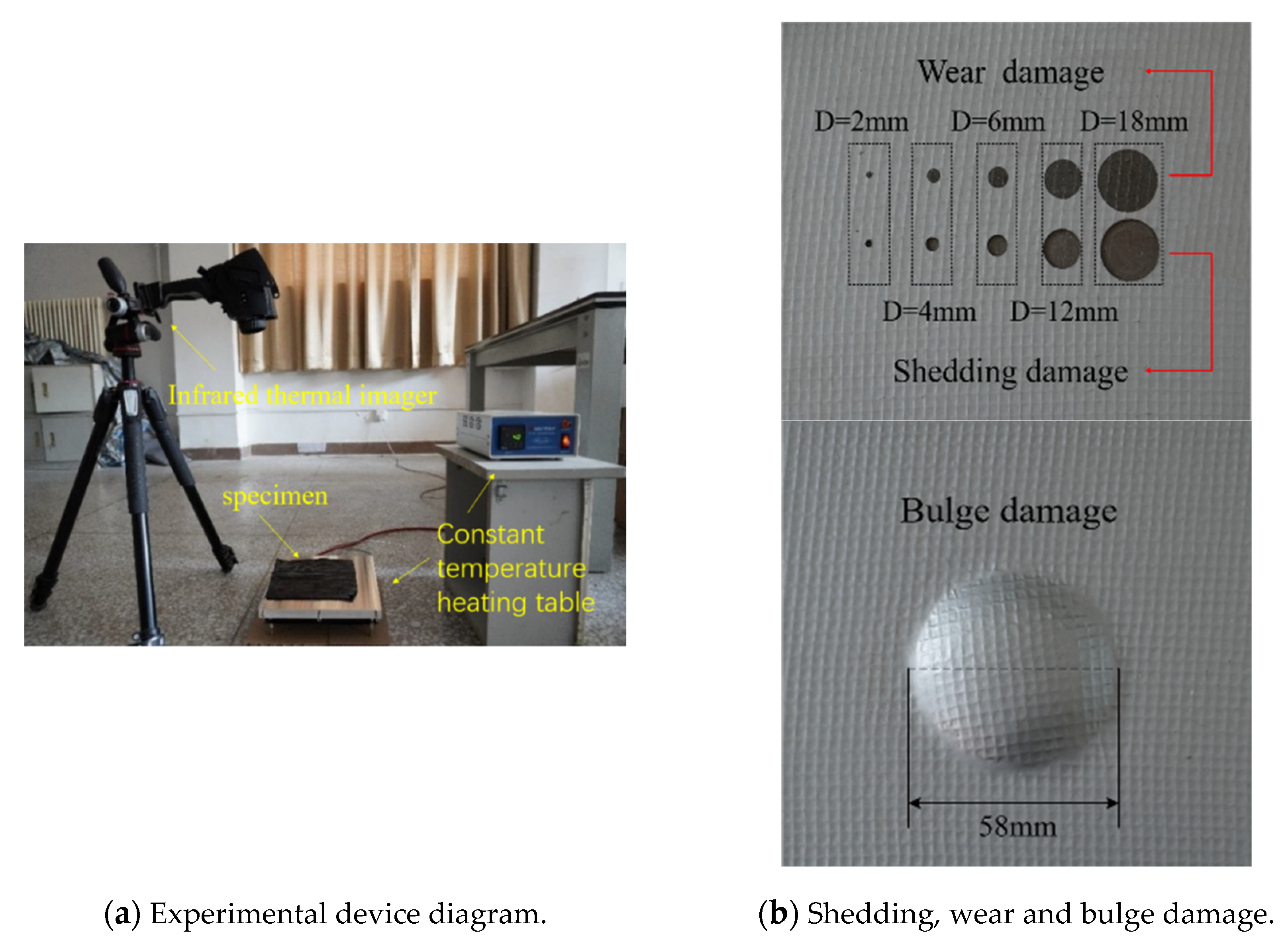
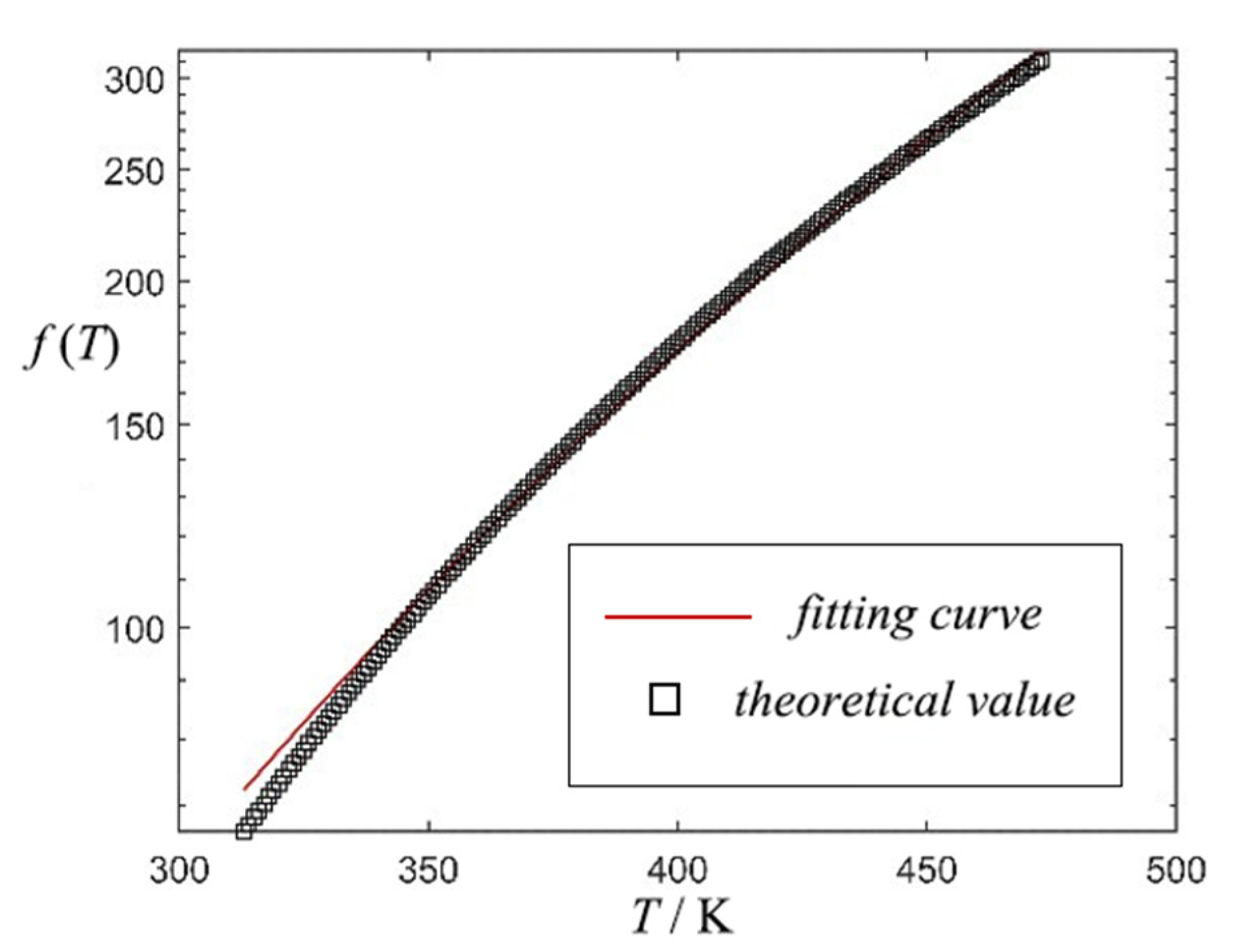
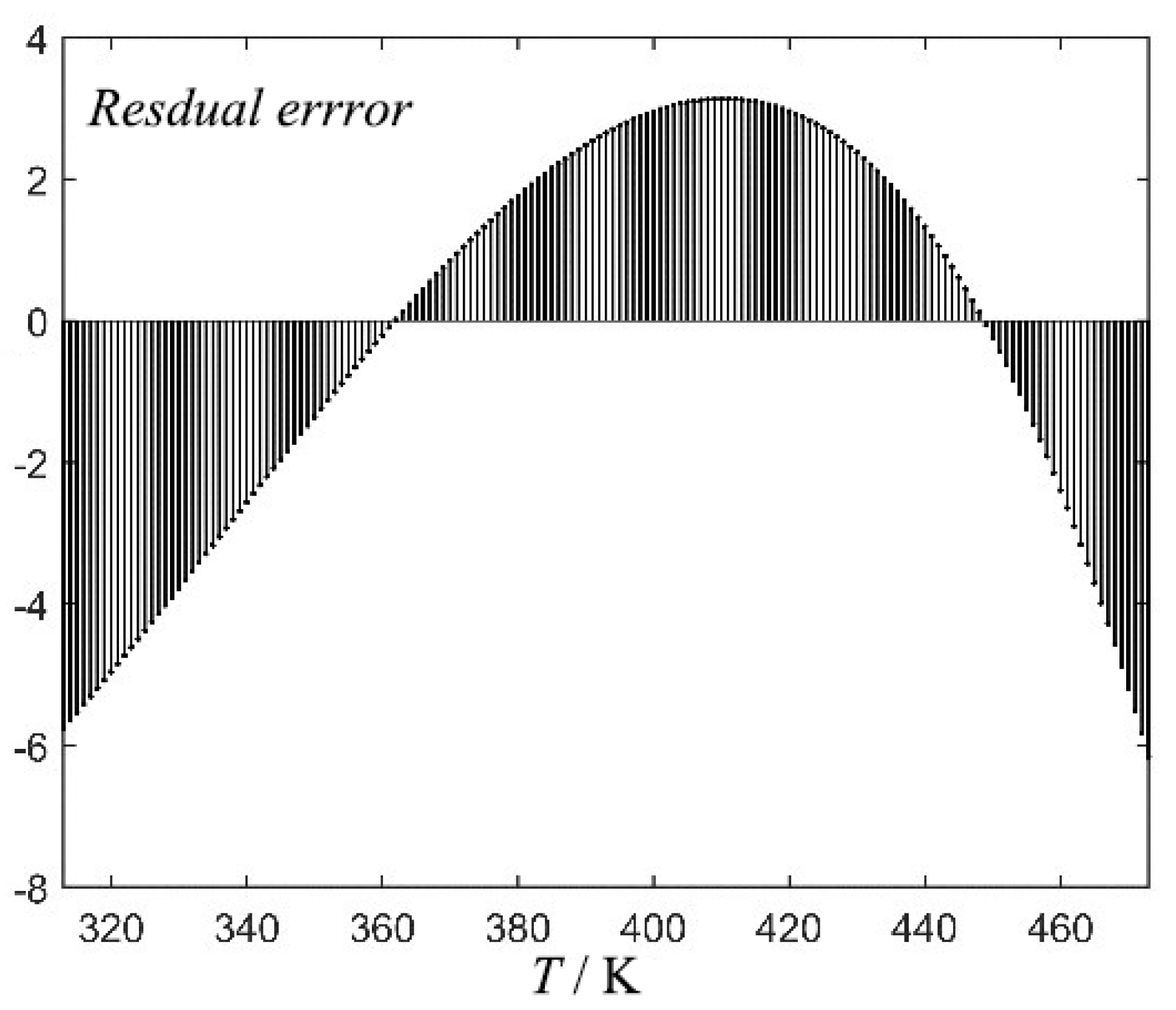

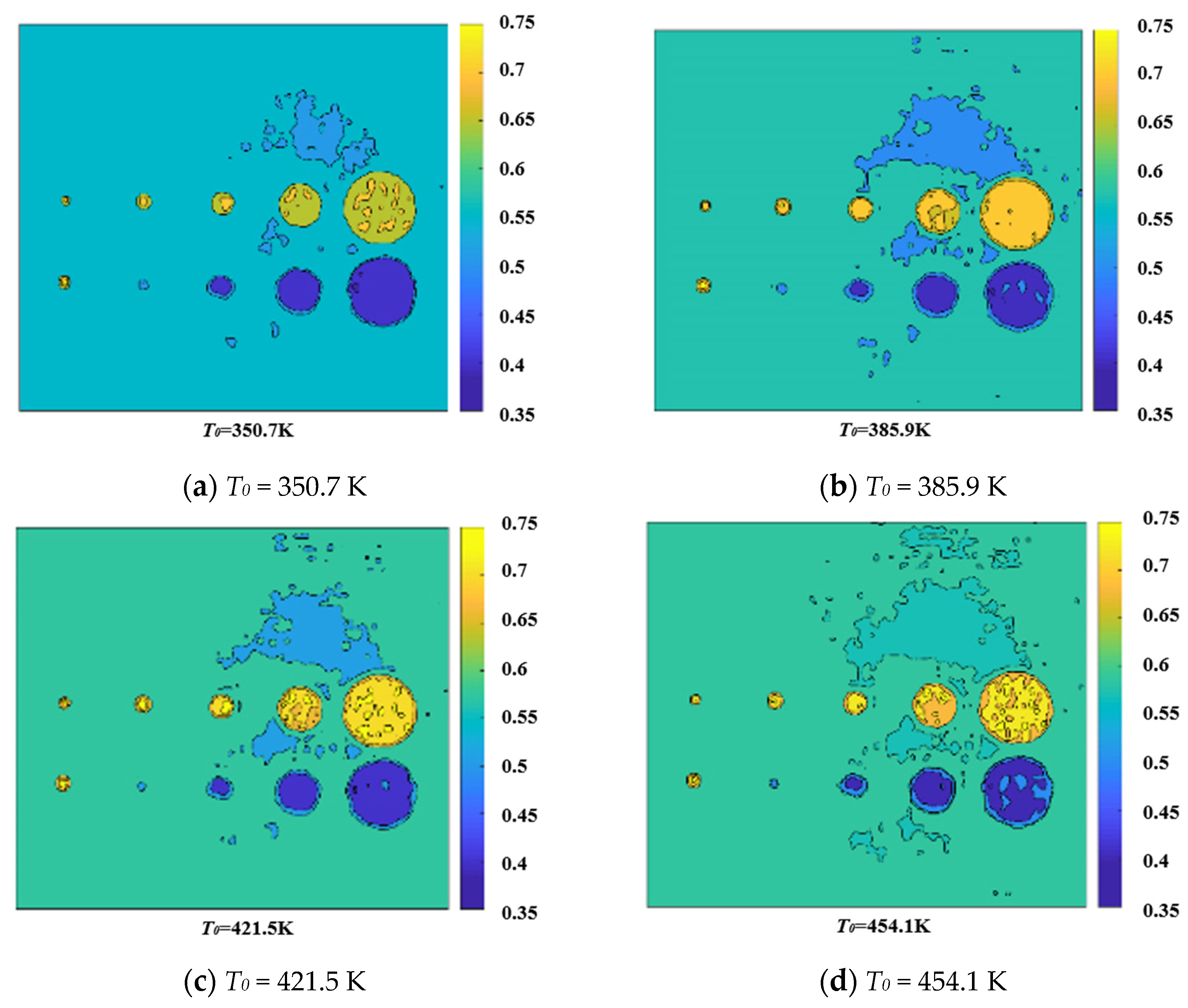
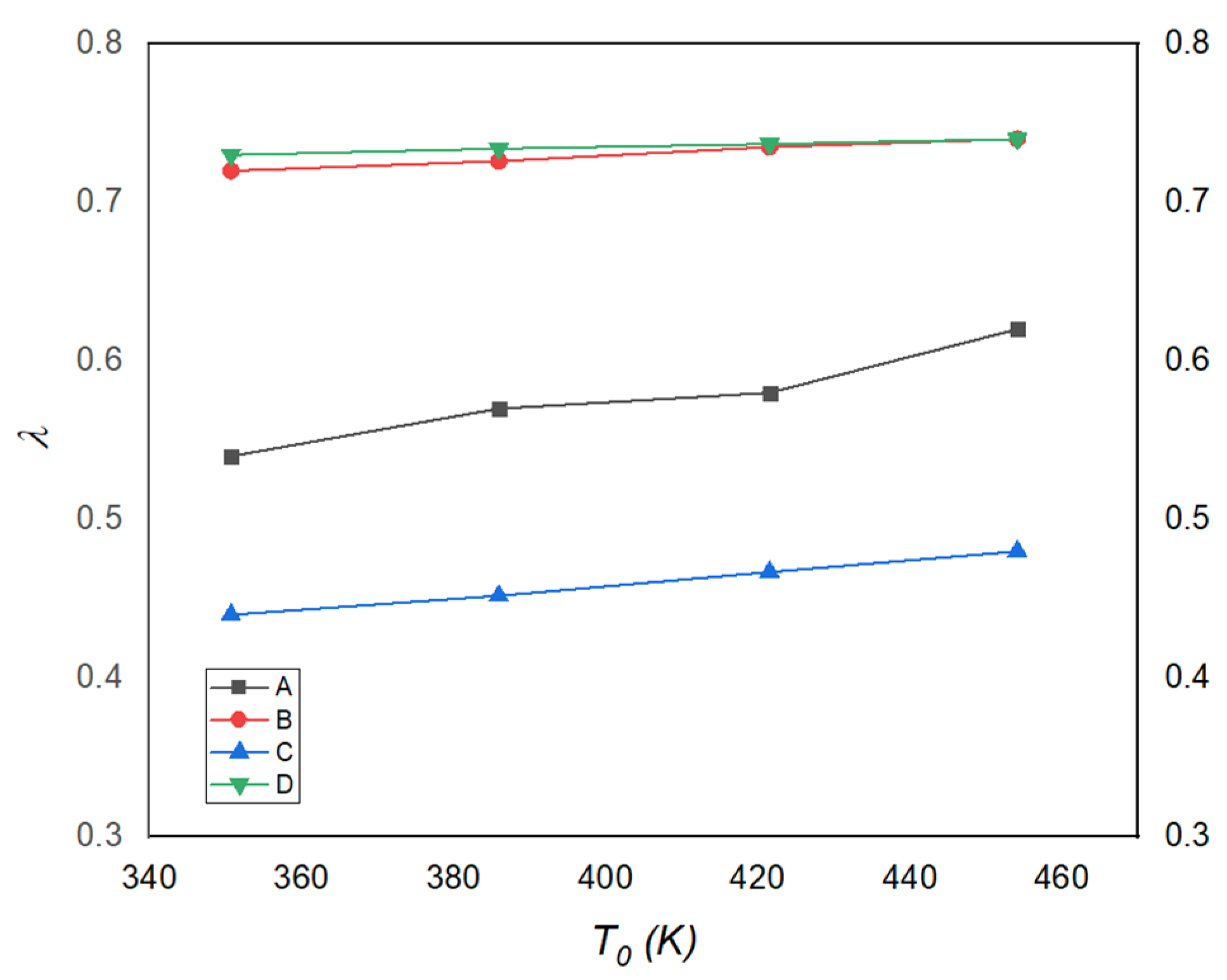

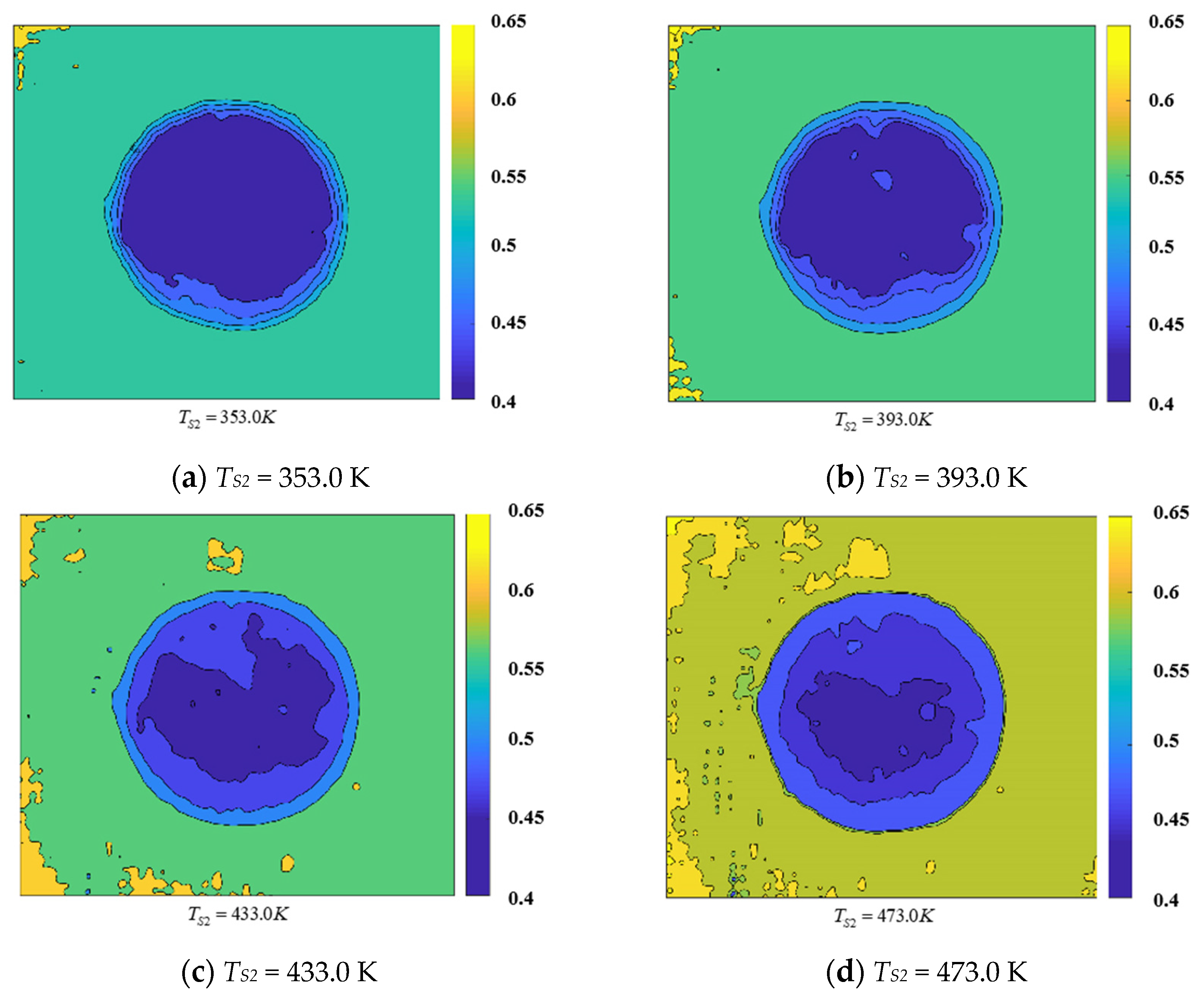
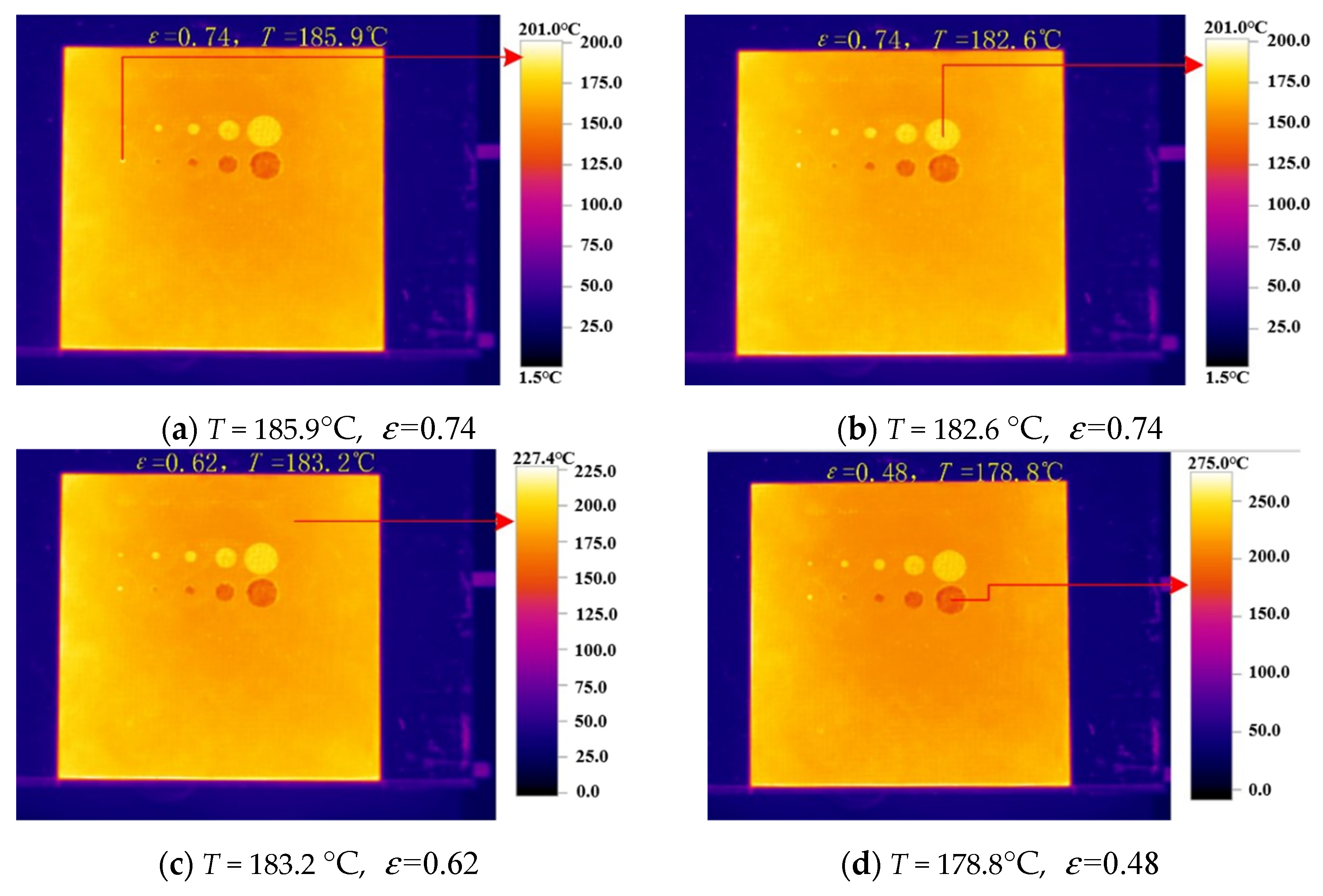
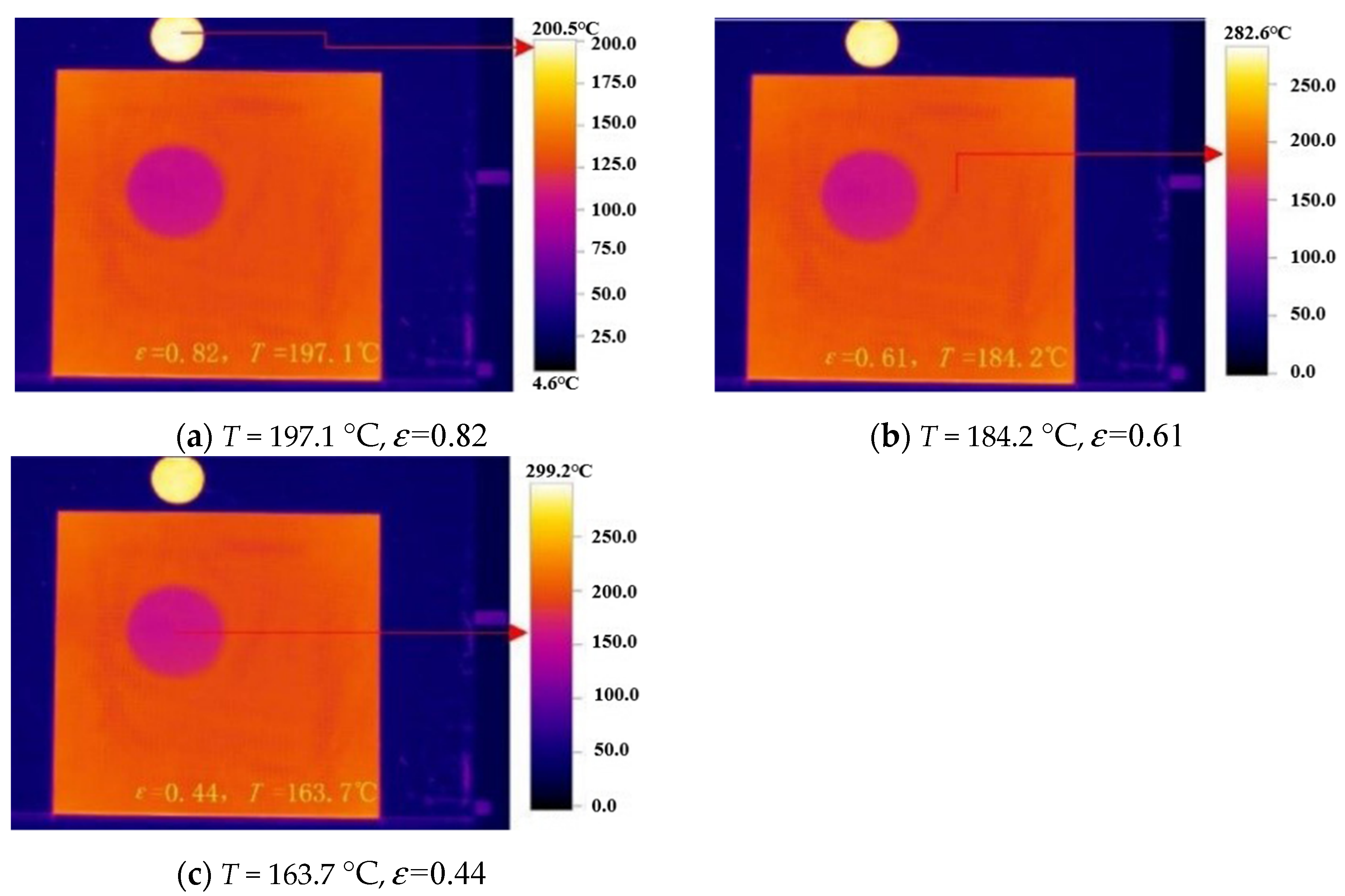
| Temperature Range/K | n Value | Standard Error | Adjusted R Square |
|---|---|---|---|
| 313~473 | 3.5843 | 0.0114 | 0.9984 |
Publisher’s Note: MDPI stays neutral with regard to jurisdictional claims in published maps and institutional affiliations. |
© 2021 by the authors. Licensee MDPI, Basel, Switzerland. This article is an open access article distributed under the terms and conditions of the Creative Commons Attribution (CC BY) license (https://creativecommons.org/licenses/by/4.0/).
Share and Cite
Jiang, D.; Li, Y.; Hua, W.; Kuang, P.; Xu, B. Nondestructive Measurement of Emissivity of Damaged Parts of Coatings. Surfaces 2021, 4, 257-267. https://doi.org/10.3390/surfaces4040021
Jiang D, Li Y, Hua W, Kuang P, Xu B. Nondestructive Measurement of Emissivity of Damaged Parts of Coatings. Surfaces. 2021; 4(4):257-267. https://doi.org/10.3390/surfaces4040021
Chicago/Turabian StyleJiang, Dikai, Yiwen Li, Weizhuo Hua, Peng Kuang, and Bo Xu. 2021. "Nondestructive Measurement of Emissivity of Damaged Parts of Coatings" Surfaces 4, no. 4: 257-267. https://doi.org/10.3390/surfaces4040021
APA StyleJiang, D., Li, Y., Hua, W., Kuang, P., & Xu, B. (2021). Nondestructive Measurement of Emissivity of Damaged Parts of Coatings. Surfaces, 4(4), 257-267. https://doi.org/10.3390/surfaces4040021






